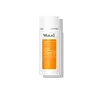What's inside
What's inside
 Key Ingredients
Key Ingredients

 Benefits
Benefits

 Concerns
Concerns

 Ingredients Side-by-side
Ingredients Side-by-side

C13-15 Alkane
SolventDimethicone/Vinyl Dimethicone Crosspolymer
Skin ConditioningIsodecyl Neopentanoate
EmollientHomosalate
Skin ConditioningButyloctyl Salicylate
Skin ConditioningEthylhexyl Salicylate
UV AbsorberOctocrylene
UV AbsorberPolyamide-3
Butyl Methoxydibenzoylmethane
UV AbsorberSclareolide
MaskingSalvia Hispanica Seed Oil
MoisturisingTetrahexyldecyl Ascorbate
AntioxidantTocopheryl Acetate
AntioxidantLinoleic Acid
Cleansing7-Dehydrocholesterol
Emulsion StabilisingLinolenic Acid
CleansingEthylhexylglycerin
Skin ConditioningZea Mays Oil
EmulsifyingTocopherol
AntioxidantPentaerythrityl Tetra-Di-T-Butyl Hydroxyhydrocinnamate
AntioxidantOleic Acid
EmollientPalmitic Acid
EmollientStearic Acid
CleansingC13-15 Alkane, Dimethicone/Vinyl Dimethicone Crosspolymer, Isodecyl Neopentanoate, Homosalate, Butyloctyl Salicylate, Ethylhexyl Salicylate, Octocrylene, Polyamide-3, Butyl Methoxydibenzoylmethane, Sclareolide, Salvia Hispanica Seed Oil, Tetrahexyldecyl Ascorbate, Tocopheryl Acetate, Linoleic Acid, 7-Dehydrocholesterol, Linolenic Acid, Ethylhexylglycerin, Zea Mays Oil, Tocopherol, Pentaerythrityl Tetra-Di-T-Butyl Hydroxyhydrocinnamate, Oleic Acid, Palmitic Acid, Stearic Acid
Titanium Dioxide 2.7%
Cosmetic ColorantZinc Oxide 10%
Cosmetic ColorantWater
Skin ConditioningDimethicone
EmollientC12-15 Alkyl Benzoate
AntimicrobialGlycerin
HumectantTriheptanoin
Skin ConditioningCaprylic/Capric Triglyceride
MaskingC13-16 Isoparaffin
SolventArgania Spinosa Kernel Oil
EmollientTocopheryl Acetate
AntioxidantPolyurethane-35
Polyhydroxystearic Acid
EmulsifyingPolymethylsilsesquioxane
Dimethicone/Vinyl Dimethicone Crosspolymer
Skin ConditioningAvena Sativa Kernel Extract
AbrasiveBisabolol
MaskingHydrolyzed Jojoba Esters
Skin ConditioningUrea
BufferingYeast Amino Acids
HumectantTrehalose
HumectantInositol
HumectantTaurine
BufferingBetaine
HumectantTocopherol
AntioxidantBiosaccharide Gum-4
Skin ConditioningHydroxyphenyl Propamidobenzoic Acid
Skin ConditioningSilica
AbrasiveCalendula Officinalis Flower Extract
MaskingPentylene Glycol
Skin ConditioningButylene Glycol
HumectantDimethicone/PEG-10/15 Crosspolymer
Lauryl PEG-9 Polydimethylsiloxyethyl Dimethicone
Skin ConditioningPEG/PPG-18/18 Dimethicone
EmulsifyingTriethoxycaprylylsilane
Aluminum Stearate
Cosmetic ColorantAlumina
AbrasiveEthylhexylglycerin
Skin ConditioningLeuconostoc/Radish Root Ferment Filtrate
AntimicrobialAscorbyl Palmitate
AntioxidantMethylpropanediol
SolventDipropylene Glycol
HumectantCaprylyl Glycol
EmollientPhenylpropanol
MaskingPhenoxyethanol
PreservativeChlorphenesin
AntimicrobialPotassium Sorbate
PreservativeSodium Benzoate
MaskingCI 77491
Cosmetic ColorantCI 77492
Cosmetic ColorantTitanium Dioxide 2.7%, Zinc Oxide 10%, Water, Dimethicone, C12-15 Alkyl Benzoate, Glycerin, Triheptanoin, Caprylic/Capric Triglyceride, C13-16 Isoparaffin, Argania Spinosa Kernel Oil, Tocopheryl Acetate, Polyurethane-35, Polyhydroxystearic Acid, Polymethylsilsesquioxane, Dimethicone/Vinyl Dimethicone Crosspolymer, Avena Sativa Kernel Extract, Bisabolol, Hydrolyzed Jojoba Esters, Urea, Yeast Amino Acids, Trehalose, Inositol, Taurine, Betaine, Tocopherol, Biosaccharide Gum-4, Hydroxyphenyl Propamidobenzoic Acid, Silica, Calendula Officinalis Flower Extract, Pentylene Glycol, Butylene Glycol, Dimethicone/PEG-10/15 Crosspolymer, Lauryl PEG-9 Polydimethylsiloxyethyl Dimethicone, PEG/PPG-18/18 Dimethicone, Triethoxycaprylylsilane, Aluminum Stearate, Alumina, Ethylhexylglycerin, Leuconostoc/Radish Root Ferment Filtrate, Ascorbyl Palmitate, Methylpropanediol, Dipropylene Glycol, Caprylyl Glycol, Phenylpropanol, Phenoxyethanol, Chlorphenesin, Potassium Sorbate, Sodium Benzoate, CI 77491, CI 77492
 Reviews
Reviews

Ingredients Explained
These ingredients are found in both products.
Ingredients higher up in an ingredient list are typically present in a larger amount.
This ingredient is a silicone used to improve the texture of products and absorb oil. It does not get absorbed into the skin.
Like other silicones, Dimethicone/Vinyl Dimethicone Crosspolymer helps condition the skin by creating a barrier. In this sense, it can act as an emollient and trap moisture in.
This ingredient is a type of elastomer.
Learn more about Dimethicone/Vinyl Dimethicone CrosspolymerEthylhexylglycerin (we can't pronounce this either) is commonly used as a preservative and skin softener. It is derived from glyceryl.
You might see Ethylhexylglycerin often paired with other preservatives such as phenoxyethanol. Ethylhexylglycerin has been found to increase the effectiveness of these other preservatives.
Tocopherol (also known as Vitamin E) is a common antioxidant used to help protect the skin from free-radicals and strengthen the skin barrier. It's also fat soluble - this means our skin is great at absorbing it.
Vitamin E also helps keep your natural skin lipids healthy. Your lipid skin barrier naturally consists of lipids, ceramides, and fatty acids. Vitamin E offers extra protection for your skin’s lipid barrier, keeping your skin healthy and nourished.
Another benefit is a bit of UV protection. Vitamin E helps reduce the damage caused by UVB rays. (It should not replace your sunscreen). Combining it with Vitamin C can decrease sunburned cells and hyperpigmentation after UV exposure.
You might have noticed Vitamin E + C often paired together. This is because it is great at stabilizing Vitamin C. Using the two together helps increase the effectiveness of both ingredients.
There are often claims that Vitamin E can reduce/prevent scarring, but these claims haven't been confirmed by scientific research.
Learn more about TocopherolTocopheryl Acetate is AKA Vitamin E. It is an antioxidant and protects your skin from free radicals. Free radicals damage the skin by breaking down collagen.
One study found using Tocopheryl Acetate with Vitamin C decreased the number of sunburned cells.
Tocopheryl Acetate is commonly found in both skincare and dietary supplements.
Learn more about Tocopheryl Acetate